Unbiased Cell-based Screening in a Neuronal Cell Model of Batten Disease Highlights an Interaction between Ca2+ Homeostasis, Autophagy, and CLN3 Protein Function
- PMID: 25878248
- PMCID: PMC4505505
- DOI: 10.1074/jbc.M114.621706
Unbiased Cell-based Screening in a Neuronal Cell Model of Batten Disease Highlights an Interaction between Ca2+ Homeostasis, Autophagy, and CLN3 Protein Function
Abstract
Abnormal accumulation of undigested macromolecules, often disease-specific, is a major feature of lysosomal and neurodegenerative disease and is frequently attributed to defective autophagy. The mechanistic underpinnings of the autophagy defects are the subject of intense research, which is aided by genetic disease models. To gain an improved understanding of the pathways regulating defective autophagy specifically in juvenile neuronal ceroid lipofuscinosis (JNCL or Batten disease), a neurodegenerative disease of childhood, we developed and piloted a GFP-microtubule-associated protein 1 light chain 3 (GFP-LC3) screening assay to identify, in an unbiased fashion, genotype-sensitive small molecule autophagy modifiers, employing a JNCL neuronal cell model bearing the most common disease mutation in CLN3. Thapsigargin, a sarco/endoplasmic reticulum Ca(2+)-ATPase (SERCA) Ca(2+) pump inhibitor, reproducibly displayed significantly more activity in the mouse JNCL cells, an effect that was also observed in human-induced pluripotent stem cell-derived JNCL neural progenitor cells. The mechanism of thapsigargin sensitivity was Ca(2+)-mediated, and autophagosome accumulation in JNCL cells could be reversed by Ca(2+) chelation. Interrogation of intracellular Ca(2+) handling highlighted alterations in endoplasmic reticulum, mitochondrial, and lysosomal Ca(2+) pools and in store-operated Ca(2+) uptake in JNCL cells. These results further support an important role for the CLN3 protein in intracellular Ca(2+) handling and in autophagic pathway flux and establish a powerful new platform for therapeutic screening.
Keywords: CLN3; GFP-LC3; autophagy; calcium; chemical biology; endoplasmic reticulum (ER); juvenile neuronal ceroid lipofuscinosis (JNCL); lysosomal storage disease; lysosome; thapsigargin.
© 2015 by The American Society for Biochemistry and Molecular Biology, Inc.
Figures
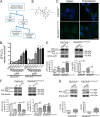


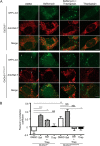
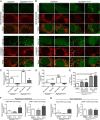
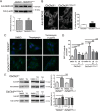
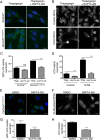


Similar articles
-
Cln3-mutations underlying juvenile neuronal ceroid lipofuscinosis cause significantly reduced levels of Palmitoyl-protein thioesterases-1 (Ppt1)-protein and Ppt1-enzyme activity in the lysosome.J Inherit Metab Dis. 2019 Sep;42(5):944-954. doi: 10.1002/jimd.12106. Epub 2019 May 14. J Inherit Metab Dis. 2019. PMID: 31025705 Free PMC article.
-
An Autophagy Modifier Screen Identifies Small Molecules Capable of Reducing Autophagosome Accumulation in a Model of CLN3-Mediated Neurodegeneration.Cells. 2019 Nov 27;8(12):1531. doi: 10.3390/cells8121531. Cells. 2019. PMID: 31783699 Free PMC article.
-
Loss of CLN3, the gene mutated in juvenile neuronal ceroid lipofuscinosis, leads to metabolic impairment and autophagy induction in retinal pigment epithelium.Biochim Biophys Acta Mol Basis Dis. 2020 Oct 1;1866(10):165883. doi: 10.1016/j.bbadis.2020.165883. Epub 2020 Jun 25. Biochim Biophys Acta Mol Basis Dis. 2020. PMID: 32592935 Free PMC article.
-
[Mechanisms of juvenile neuronal ceroid lipofuscinosis (JNCL)].Yi Chuan. 2009 Aug;31(8):779-84. doi: 10.3724/sp.j.1005.2009.00779. Yi Chuan. 2009. PMID: 19689937 Review. Chinese.
-
The CLN3 gene and protein: What we know.Mol Genet Genomic Med. 2019 Dec;7(12):e859. doi: 10.1002/mgg3.859. Epub 2019 Sep 30. Mol Genet Genomic Med. 2019. PMID: 31568712 Free PMC article. Review.
Cited by
-
Synapse alterations precede neuronal damage and storage pathology in a human cerebral organoid model of CLN3-juvenile neuronal ceroid lipofuscinosis.Acta Neuropathol Commun. 2019 Dec 30;7(1):222. doi: 10.1186/s40478-019-0871-7. Acta Neuropathol Commun. 2019. PMID: 31888773 Free PMC article.
-
TPC2 rescues lysosomal storage in mucolipidosis type IV, Niemann-Pick type C1, and Batten disease.EMBO Mol Med. 2022 Sep 7;14(9):e15377. doi: 10.15252/emmm.202115377. Epub 2022 Aug 5. EMBO Mol Med. 2022. PMID: 35929194 Free PMC article.
-
CLN3, at the crossroads of endocytic trafficking.Neurosci Lett. 2021 Sep 25;762:136117. doi: 10.1016/j.neulet.2021.136117. Epub 2021 Jul 16. Neurosci Lett. 2021. PMID: 34274435 Free PMC article.
-
Calcium alterations signal either to senescence or to autophagy induction in stem cells upon oxidative stress.Aging (Albany NY). 2016 Dec 8;8(12):3400-3418. doi: 10.18632/aging.101130. Aging (Albany NY). 2016. PMID: 27941214 Free PMC article.
-
Stem Cell Applications in Lysosomal Storage Disorders: Progress and Ongoing Challenges.Adv Exp Med Biol. 2021;1347:135-162. doi: 10.1007/5584_2021_639. Adv Exp Med Biol. 2021. PMID: 33977438
References
-
- Mole S. E., Williams R. E., Goebel H. H. (eds) (2011) The Neuronal Ceroid Lipofuscinoses (Batten Disease), 2nd Ed., Oxford University Press, Oxford, UK
-
- Kollmann K., Uusi-Rauva K., Scifo E., Tyynelä J., Jalanko A., Braulke T. (2013) Cell biology and function of neuronal ceroid lipofuscinosis-related proteins. Biochim. Biophys. Acta 1832, 1866–1881 - PubMed
-
- Warrier V., Vieira M., Mole S. E. (2013) Genetic basis and phenotypic correlations of the neuronal ceroid lipofusinoses. Biochim. Biophys. Acta 1832, 1827–1830 - PubMed
-
- International Batten Disease Consortium (1995) Isolation of a novel gene underlying Batten disease, CLN3. The International Batten Disease Consortium. Cell 82, 949–957 - PubMed
Publication types
MeSH terms
Substances
Grants and funding
LinkOut - more resources
Full Text Sources
Other Literature Sources
Molecular Biology Databases
Research Materials
Miscellaneous

